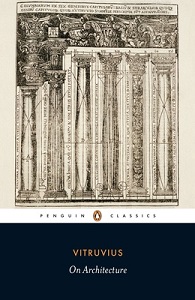
On Architecture - Penguin Classics
'Architecture consists of planning, projection, harmony, modularity, appropriateness and distribution' The writings of the architect and engineer Vitruvius (c. 90 - c. 20 BC) provide a fascinating picture of how the Romans planned and built their great structures and cities. His treatise, dedicated to Augustus, sets out all the information an architect of his day needed - from plans for temples, public baths, government buildings and private homes to the best materials and techniques for building - and no detail escapes his attention, whether the number of flutes in a column or the details of the construction of water clocks, sundials and catapults. His theories have remained influential for two millennia, especially those on the use of nature's harmonies in design and the ideal modular proportions of the human body, which later inspired Leonardo da Vinci. Richard Schofield's new translation captures the clear, pragmatic tone of Vitruvius' writings. In his introduction, Robert Tavernor discusses Vitruvius' enduring legacy, his ideas about nature and proportion, and the wide range of subjects on which he wrote. This edition also includes further reading, illustrations, indexes and notes...
